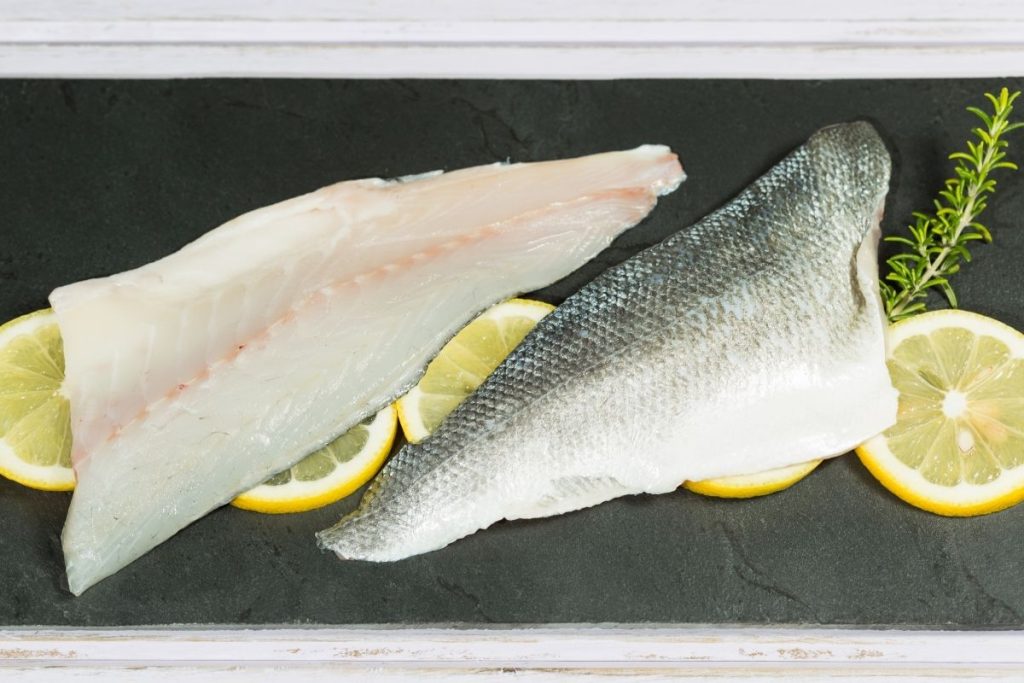The process of fileting a bass can be a tricky one if you’re not used to it, but with a little practice, it won’t take you long at all before you’re cooking up a bass for your favorite recipes. What is the best way to hold a bass? Continue reading to learn how you should hold this fish.
You must know what you’re doing, though- skimping on certain steps could mean you’re risking exposure to certain bacteria and foodborne illnesses.
The process of preparing a bass to be cooked involves cleaning the fish, scaling the fish, and removing its organs, before finally fileting the fish.
The following article will tell you all you need to know to properly filet a bass.
Equipment Required For Fileting A Bass
If you’re fileting a bass, you’re going to need certain equipment. The most obvious tool required is a fillet knife, which is designed for this specific purpose- fileting fish.
Regardless of which part of the fish you’re cutting, you need to remember to keep a firm grip on the knife.
The fillet knife should be sharpened regularly- do not attempt to filet a fish with a knife that’s not sharp- and ideally, it’ll be longer than the bass’s height, around eight to 10 inches.
You’ll also need a glove that’s resistant to cuts, because the bass is as slippery as any fish, so you need a glove that will allow you maximum grip, and will prevent cuts.
Because you’re working with raw meat, you’re going to need a cutting board or a cleaning station that you can easily keep clean.
As soon as you’ve finished the process of fileting the fish, you must clean the board immediately.
To preserve the fish, you’ll want either a vacuum sealer or a Ziploc bag, which you can use to store the fish in the freezer or the fridge respectively.
Unless you’re planning on burying the remains of the fish in the garden for fertilizer purposes, you’ll also need a trash can to dispose of the parts you’re not going to be using.
The final component required for fileting a fish is fresh running water. It’s a messy process, so you’ll need a way to keep yourself, your fish, and your equipment clean.
Scaling The Bass
The first step to fileting a bass is scaling the fish. This tends to be one of the trickier steps involved in the fileting process, but with a little practice, you’ll have mastered it in no time.
Lie your bass on your cutting board, and hold it with a firm grip in your left hand. With your right hand, press the knife against the fish’s scales.
Start at the tail of the bass and scrape up to the head. The scales will pop off against the blade, but you’ll need a little more pressure to get the scales off near the neck and the gills.
Usually, you’d use your fillet knife for this step, but because you’re removing the scales with friction rather than with sharpness, you’d probably get away with using a butter knife, or a tool designed for scaling fish.
Run your bass under fresh water to make sure that every scale is gone.
Gutting The Bass
The first step to gutting your fish will be finding the vent, which is a small hole by the anal fin on the fish’s belly. From there, slice up through the belly up to the bass’s jawbone.
Make sure you’re not cutting too deep, though, otherwise you’ll puncture the organs.
Now that you’ve cut open the fish, you’ll see all of the exposed organs.
Use your hands to carefully scoop these out. You can use your blade to split the sac containing the organs from the rest of the fish’s body.
There’ll be some innards by the throat that are still connected, so use your knife to cut these.
Once again, run the bass under cold water to ensure there are no innards remaining inside the fish.
Removing The Fillets

Tyger Leader is reader-supported and may earn a commission when you book or purchase using our links. Learn more about our affiliate disclaimer here.
The same process tends to be used when fileting all kinds of bass, and this process begins with placing your blade right behind the pectoral fin and the gills.
Slice up through the fish towards the neck. Keep cutting until you get to the pelvic thin, and then cut up to the fish’s head.
Your next step will be cutting the top of the bass, by the backbone.
Slice from here down to the fish’s tail fin, never straying far from the bass’s backbone.
Cut a little deeper and follow both the spine and the rib cage.
Slice until you get to the start of the tail; don’t take the tail off, though.
Turn the fish around so it’s facing the ceiling and place your blade at the tail’s base, then make a firm but slightly angled cut between the fillet and the skin. You’ll now have removed the skin.
Turn the fish over and repeat this. Remove the remaining bones with either your fingers or a pair of tweezers.
If you’re struggling, use your knife- but this is likely to tamper with the meat itself, and leave you with less of a fillet.
Run the fish under cold water before sealing it up.
You must discard the entrails, the skin, the bones, and the head properly, which could mean you’re just putting it all in the trash.
Conclusion
It can be difficult to get to grips with all the different stages involved in fileting a bass- or fileting any kind of fish- but as long as you follow the steps provided in this guide, you shouldn’t have too much trouble.
The hardest part tends to be the scaling at the start but just remember: there’s no rush.
The more you let yourself get frustrated, the more you risk accidentally puncturing an organ and contaminating the bass.



